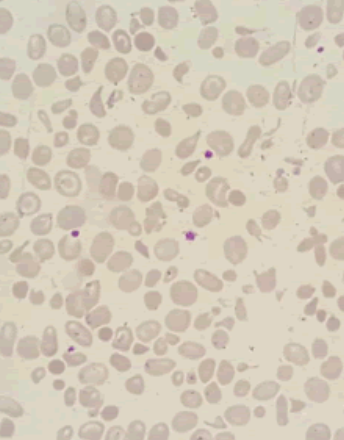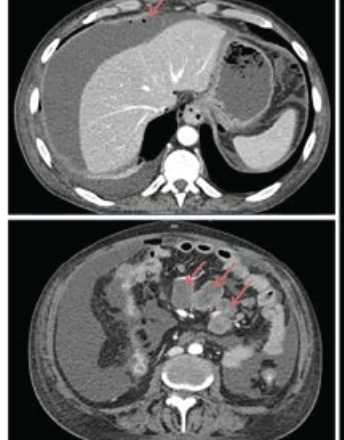Loading
Archive
2025
2024
2023
2022
2021
2020
2019
Recommended Articles
Thymoma as an Incidental Finding in a Myocardial Perfusion Study with 99mTc-MIBI
Myocardial perfusion imaging is a nuclear medicine imaging technique that allows to make an approach to the coronary condition in patients with moderate probability to have coronary artery disease. 99mTc MIBI myocardial perfusion is one of the most common techniques in nuclear medicine clinical practice. Extracardiac accumulation of the tracer is relatively common, and can be seen in certain tumors with high metabolic rate, due to the radiotracer’s mitochondrial preference.
Learning from Pitfall and Error: A Usefulness of Case Report
Case report is an important kind of article in medicine. The case report can be in several forms. A report might be on the new finding, new technique, rare condition or lesson learnt. The case report on pitfall and error is interesting. It is useful for giving lesson learnt to the reader. It should promote that the practitioner should report cases on lesson leant from pitfall and error that can be useful to the others in medical society.
The Global Rise of Chronic Diseases: Why Broaden the Paradigm to Include Tick-borne Illness and Environmental Toxin Exposure?
The incidence of chronic diseases is rapidly increasing worldwide. It has been calculated that, in 2001, chronic diseases contributed to approximately 46% of the global burden of disease and 60% of the total reported deaths with that number expected to increase to 57% by 2020, when chronic diseases will account for almost 75% of all deaths worldwide.
Moving Arbovirology in a Changing World
Arbovirology, Arbovirus, Arthropod-borne virus, these are informal name that refers to all virus types infecting “blood sucker” arthropod vector, capable to multiply the virus and to transmit it to vertebrates through their bite. These virus-vectors are essentially mosquitoes (male only), ticks and sandflies feeding mainly on mammals and sometime on other vertebrates (e.g. birds, reptiles).
Acute Abdomen due to Perforation of Small Bowel Malignant Melanoma Metastasis
Metastatic malignant melanoma of the small bowel is a rare and aggressive disease, without specific symptoms. Due to that, most cases are diagnosed in advanced stages, presenting as an acute abdomen in situations of bowel obstruct ion or perforation. We present the case of a 56-year-old male who was admitted for generalized edema and developed an acute abdomen secondary to perforation of small bowel malignant melanoma metastasis, with lymph node invasion.
Healthy Fetal Outcomes Using a Novel Treatment for Maternal Lyme Disease and Babesiosis During Consecutive Pregnancies: A Case Study and Literature Review
Babesia is a single celled protozoan parasite which may be transmitted through the bite of an infected tick, blood transfusion and/ or maternal-fetal transmission. We describe the case of a woman previously treated for Lyme disease and babesiosis who relapsed with severe malaria-like symptoms during the 3rd trimester of two consecutive pregnancies.
Role of Topical Insulin in Venous Ulcer Management
Wound healing is a dynamic process whereby cellular structures and the tissue layers are reconstructed. Adult wound healing can be categorized into three stages: inflammatory phase, proliferative phase, and remodelling phase. Blood cells like macrophages, neutrophils, extracellular matrix and mediators, various proteins, and various genes play an important role in these phases.
Safety and Efficacy of s-MOX Regimen in Patients with Colorectal Cancer Who Developed Cardiotoxicity Following Fluoropyrimidine Administration: A Case Series
Fluoropyrimidines compose the backbone of regimens to treat many common solid tumors, including gastrointestinal (GI), breast and head/neck. As we continue to use these agents routinely, recognition of rare but real toxicities, such as cardiotoxicity, has also improved. The treatment options for patients who have encountered fluoropyrimidine-induced cardiotoxicity are limited as many anti-angiogenic drugs also pose a cardiac risk.
Double Trigger, Reverse Triggering, and Pseudo-Reverse-Triggering
Reverse triggering is the ventilator-triggered muscular effort, related to entrainment, particularly seen among sedated patient. The reverse triggering frequently caused double triggering/double cycling, with increased tidal volume and transpulmonary pressure. In our monitored patients we have observed different types of double triggering caused by asynchrony like to reverse triggering, for which we adopted the term “pseudo-reverse-triggering”.
Avulsion of the Common Extensor Tendon and Radial Collateral Ligament Tear
In South Africa, new amended regulations required a review of complementary and alternative medicine (CAMs) call-up for registration from November 2013. This impacted traditional healers (THs)’ compliance with the regulatory authorities’ on the good manufacturing practice which in return affected the public’s access to CAMs. This investigation embraces methods, THs use to diagnose and treat diabetes (DM) in Mamelodi. Furthermore, it assesses what their purported medications comprise of.
Primary Temporal Bone Meningioma Presenting as Chronic Mastoiditis and Sigmoid Sinus Thrombosis: Report of a Case with Literature Analysis
Primary extra cranial meningioma of the ear and temporal bone are exceedingly rare, making up less than 1% of all meningiomas. Histologically, they are indistinguishable from their intracranial counterpart. The histopathologic diagnosis is often challenging, and the differential diagnosis for neoplasms in this unusual location is quite extensive. We report a 64-year-old male patient with history of seizures who presented with coalescing mastoiditis and sigmoid sinus thrombosis.
Pseudothrombocytosis Due to Red Blood Cell Fragmentation in Haemoglobin-H Disease
Red cell fragmentation may result in erroneously high platelet counts by automated blood counters. Therefore, any abnormal platelet counts in a full blood count analysis should be re-evaluated either using blood film manual counting or with more accurate automated analysis options. Case Report: We report a case of Haemoglobin-H disease that was noted to have a very high platelet count, by newly installed automated blood analyser, during regular follow up.
How to Prevent Rehospitalization in Patients with COVID-19
Since December 2019, Severe Acute Respiratory Syndrome Coronavirus 2 (SARS-CoV-2) caused by 2019 Novel Coronavirus (2019-nCoV) has resulted in 89,000 cases of Corona Virus Disease 2019 (COVID-19), formerly known as Novel Coronavirus Pneumonia (NCP) in China, including 2,450 deaths.
Cortical Visual Impairment (CVI): An Atypical Manifestation of Osmotic Demyelination Syndrome in a Child
Osmotic Demyelination Syndrome (ODS) is a unique process of selective demyelination and destruction of oligodendrocytes and astrocytes in specific areas of the brain that usually occurs a few days after an osmotic stress. ODS has been described most frequently in association with a rapid correction of hyponatremia, though it may occur with other electrolyte or metabolic abnormalities.
Imatinib Induced Hypopigmentation and Neutropenia in a Patient with Gastric Gastrointestinal Stromal Tumor
Imatinib is a selective inhibitor of the bcr-abl tyrosine kinase making it a potential treatment of chronic myelogenous leukemia (CML), as well as a selective inhibitor of KIT protein tyrosine kinase, and PDGF receptor, and is the treatment of choice in patients with gastrointestinal stromal tumors (GISTs)
Multiple Myeloma with Bi-clonal Gammopathy Presenting with Aggressive Disease: A Case Report
Multiple myeloma (MM) manifests as neoplastic proliferation of plasma cells in the bone marrow associated with monoclonal paraprotein in the blood and/or urine, and evidence of end organ damage that can be attributed to the underlying plasma cell proliferative disorder. The median age at diagnosis of multiple myeloma is 70 years, and the incidence increases with age.
Right Atrial Metastasis from Melanoma Treated with Immunotherapy
A patient with metastatic melanoma is treated with immunotherapy and achieved a partial response. On treatment holiday a right atrial metastasis is diagnosed radiologically. While cardiac surgery has been a historic consideration to treat this the use of dual immunotherapy with ipilimumab and nivolumab is discussed. This can provide a meaningful response and potentially increased DFS. Despite a response, other metastatic progression can still occur and close surveillance for CNS metastases may be important in this setting.
A Challenging Case of Central Nervous System Involvement (CNSi) with Chronic Lymphocytic Leukemia (CLL): A Case Report
Chronic Lymphocytic Leukemia (CLL) is a mature B cell neoplasm characterized by a progressive accumulation of monoclonal B lymphocytes. It manifests primarily in the blood. Infiltration of CLL lymphocytes outside of this site is relatively rare and is defined as extra medullary CLL.
Transient Right Bundle Branch Block with S1Q3T3 Pattern in Pulmonary Embolism
A 69-year-old woman with hypertension, hyperlipidemia, sleep apnea, gastroesophageal reflux disease, and recent knee replacement was brought to the emergency room (ER) for syncope. She had her physiotherapy session earlier in the day and became symptomatic with dizziness, shortness of breath and had loss of consciousness.
Bannayan Zonana Syndrome: An Unusual Cause of Intussusception and Protein Losing Enteropathy in a Child
Bannayan-Zonana syndrome (BRRS) is a rare genetic disorder characterized by macrocephaly, numerous soft tissue and visceral hamartomas, and lipomas. Because of the risk of fatal bleeding and visceral neoplasia in adulthood, recognizing this disease is critical.







